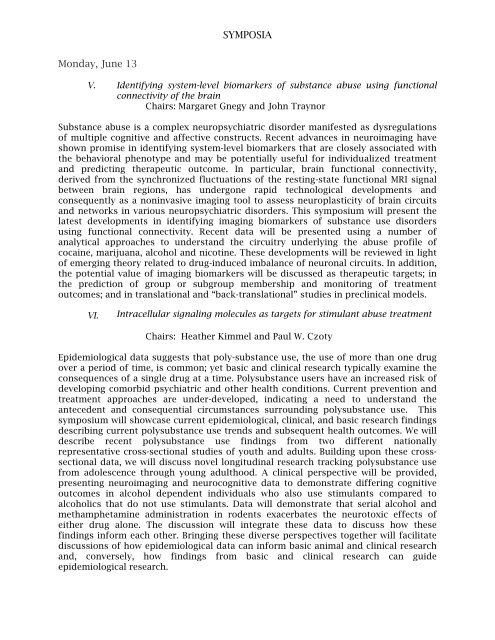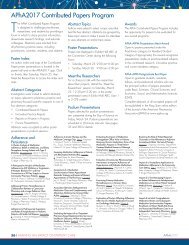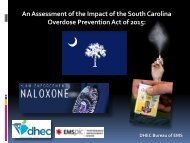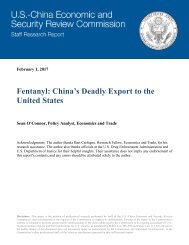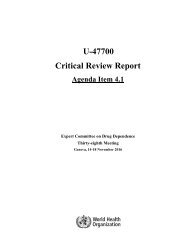CPDD 78th Annual Scientific Meeting Program
2016-78th-CPDD-Program-Book-6-07-16FINAL
2016-78th-CPDD-Program-Book-6-07-16FINAL
Create successful ePaper yourself
Turn your PDF publications into a flip-book with our unique Google optimized e-Paper software.
SYMPOSIA<br />
Monday, June 13<br />
V. Identifying system-level biomarkers of substance abuse using functional<br />
connectivity of the brain<br />
Chairs: Margaret Gnegy and John Traynor<br />
Substance abuse is a complex neuropsychiatric disorder manifested as dysregulations<br />
of multiple cognitive and affective constructs. Recent advances in neuroimaging have<br />
shown promise in identifying system-level biomarkers that are closely associated with<br />
the behavioral phenotype and may be potentially useful for individualized treatment<br />
and predicting therapeutic outcome. In particular, brain functional connectivity,<br />
derived from the synchronized fluctuations of the resting-state functional MRI signal<br />
between brain regions, has undergone rapid technological developments and<br />
consequently as a noninvasive imaging tool to assess neuroplasticity of brain circuits<br />
and networks in various neuropsychiatric disorders. This symposium will present the<br />
latest developments in identifying imaging biomarkers of substance use disorders<br />
using functional connectivity. Recent data will be presented using a number of<br />
analytical approaches to understand the circuitry underlying the abuse profile of<br />
cocaine, marijuana, alcohol and nicotine. These developments will be reviewed in light<br />
of emerging theory related to drug-induced imbalance of neuronal circuits. In addition,<br />
the potential value of imaging biomarkers will be discussed as therapeutic targets; in<br />
the prediction of group or subgroup membership and monitoring of treatment<br />
outcomes; and in translational and “back-translational” studies in preclinical models.<br />
VI.<br />
Intracellular signaling molecules as targets for stimulant abuse treatment<br />
Chairs: Heather Kimmel and Paul W. Czoty<br />
Epidemiological data suggests that poly-substance use, the use of more than one drug<br />
over a period of time, is common; yet basic and clinical research typically examine the<br />
consequences of a single drug at a time. Polysubstance users have an increased risk of<br />
developing comorbid psychiatric and other health conditions. Current prevention and<br />
treatment approaches are under-developed, indicating a need to understand the<br />
antecedent and consequential circumstances surrounding polysubstance use. This<br />
symposium will showcase current epidemiological, clinical, and basic research findings<br />
describing current polysubstance use trends and subsequent health outcomes. We will<br />
describe recent polysubstance use findings from two different nationally<br />
representative cross-sectional studies of youth and adults. Building upon these crosssectional<br />
data, we will discuss novel longitudinal research tracking polysubstance use<br />
from adolescence through young adulthood. A clinical perspective will be provided,<br />
presenting neuroimaging and neurocognitive data to demonstrate differing cognitive<br />
outcomes in alcohol dependent individuals who also use stimulants compared to<br />
alcoholics that do not use stimulants. Data will demonstrate that serial alcohol and<br />
methamphetamine administration in rodents exacerbates the neurotoxic effects of<br />
either drug alone. The discussion will integrate these data to discuss how these<br />
findings inform each other. Bringing these diverse perspectives together will facilitate<br />
discussions of how epidemiological data can inform basic animal and clinical research<br />
and, conversely, how findings from basic and clinical research can guide<br />
epidemiological research.


